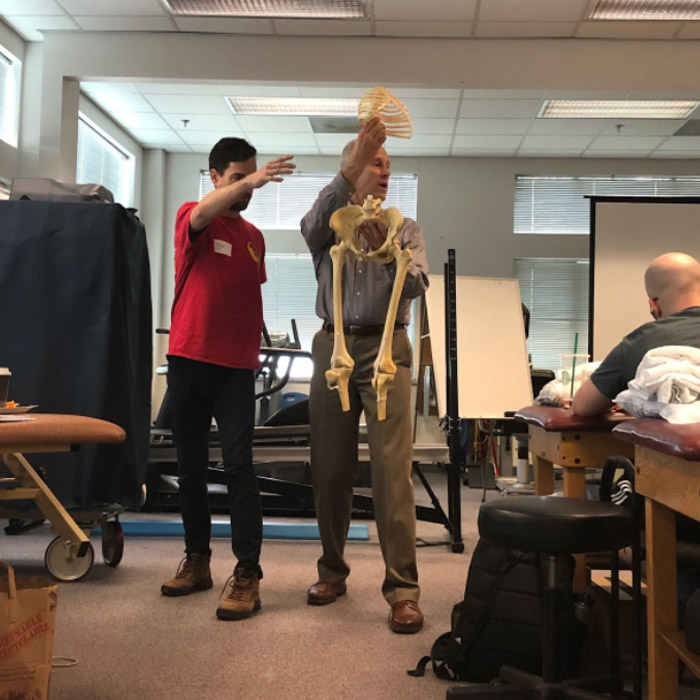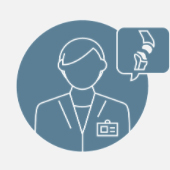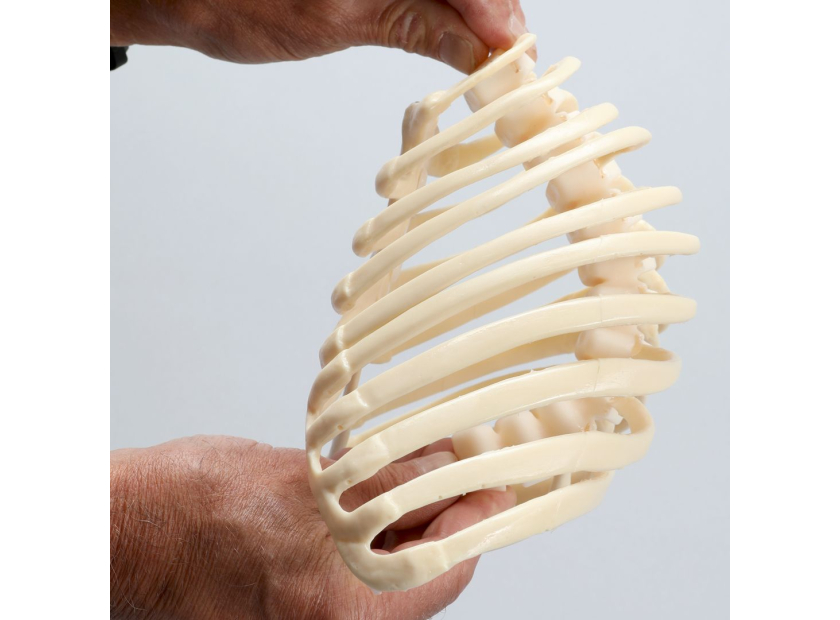Training With a Ribcage Anatomy Model for a More Tactile Demonstration
Anatomical models help transform book learning into transferable clinical skills through hands-on training. This article will discuss the various advantages of training with a ribcage anatomy model to improve tactile demonstration through accurate recreation of tri-planar movement.
Anatomical Models Build Student Knowledge and Reasoning
The rib cage has unique structural and biomechanical properties. Because of this, models serve as valuable aids to anatomical visualization, familiarization, and clinical reasoning. Ribcage anatomy models support students in acquiring a structural understanding of the ribcage’s relationship to the spine as part of one connected system. This is critical in establishing the rationale for treating postural and balance problems. For example, innovations in the postural treatments based on recognizing structural asymmetry consider respiratory mechanics, weight distribution, and other factors when planning a course of intervention. (See Postural Restoration Institute®'s case study below).
Anatomical models also help learners rationalize clinical reasoning regarding the treatment of pulmonary disease and surgery and physical therapy. Furthermore, models enable students to interpret diagnostic images based on a solid understanding of the ribcage’s anatomy. Medical trainees with a thorough understanding of the ribcage’s structure and function can plan and execute surgical procedures with greater confidence in success.
A high-quality ribcage anatomy model provides the following benefits:
Superior Visualization
An articulated ribcage anatomy model furnishes learners with a tactile demonstration of the ribcage’s tri-planar movements. The upper ribs are more associated with forward and backward motion on the sagittal plane, also called ‘pump-handle’ rib motion. In turn, the lower ribs are more related to side-to-side motion occurring on the frontal plane, known as bucket-handle rib motion (as in lifting the handle from the side of a bucket).
While upper and lower rib movements are thus distinguished, it is also true that general rib motion—both upper and lower—incorporates both pump-handle and bucket-handle motion. Pliable models demonstrate this concept accurately compared to traditional, rigid models that offer no flexibility.
Thus, high-quality models provide students with superior visualization of the basic structural concept of the ribcage and how this translates into functional movement. Without a faithful reproduction of tri-planar movement, students might struggle with an incomplete conception of ribcage movement as well as its synchronicity with the spine and pelvic diaphragm.
Tactile Demonstration of Complications and Injuries
Models not only show how the ribcage moves in relation to the spine and pelvis. It also demonstrates how deformation and complications affect overall posture and balance.
For example, morphological changes in elderly patients' spines can deform the ribs' plane of movement and expose them to a heightened risk of fracture. Deformities due to injuries can also increase disproportionate loading and, therefore, the risk of fracture to the ribs. Models can help medical professionals recognize injury patterns and factors in age- or injury-related changes when planning the course of therapy and treatment.
In the same way, a ribcage anatomy model shows how structural changes to the chest can cause complications after surgery. For example, open reduction and internal fixation (ORIF) techniques used to treat rib fractures carry the risk of pulmonary and bone malunion complications. High-quality, flexible ribcage anatomy models provide a superior tactile demonstration of complications and injuries than immovable models.
Ribcage Anatomy Model Demonstrates Accurate Plane of Movement
The Postural Restoration Institute® (PRI) partnered with Sawbones to develop a best-in-class ribcage anatomy model that authentically recreates anatomical presentation and physical therapy interventions. The Institute was founded in Lincoln, Nebraska, to develop and disseminate innovative treatment concepts based on the role of human asymmetry in postural disorders.
Experts from the Institute collaborated with designers from Sawbones to develop and refine a suitable model that accurately demonstrates the ribcage’s plane of movement. Their work culminated in the SYMBA Ribcage Model, which provided flexibility and rotation that previous models lacked. SYMBA's pliability also allowed instructors to manipulate the model and effectively demonstrate three-dimensional positioning.

The custom ribcage anatomy model Sawbones and PRI developed was made of solid foam material. This ensures extended lifespan and reliable performance on the hundredth demonstration as on the first.
The research and design that perfected the model enable instructors to teach and demonstrate very specific treatment best practices that serve course design. Tactile demonstration using such high-quality models drives student engagement and stimulates critical thinking based on the visual, 3D presentation. Indeed, the Postural Restoration Institute® reported that using an authentic model for clinical representation elicited more questions from students.
In summary, a ribcage anatomy model assists students in acquiring a comprehensive anatomical understanding of the ribcage's structure and biomechanical properties. It aids students in rationalizing clinical reasoning regarding treatment and therapy. It also furnishes trainees with a sound foundation for interpreting diagnostic images. Lastly, a high-quality ribcage anatomy model renders an accurate recreation of tri-planar movement that rigid models cannot recreate, vastly improving the quality of instruction in medical classes.
Best-In-Class Models For Tactile Demonstration
Sawbones offers the best-in-class ribcage anatomy model for medical demonstration and instruction. We have partnered with several academic institutions, including the Postural Restoration Institute® and Medical Sales College. Known for originating hands-on workshop models, Sawbones continues its leadership in the manufacturing of anatomical medical training models. For more information on our offerings or to talk about custom training models, contact us at 206-463-5551.

If you're seeking something you can't find on our website, our sales team is happy to help. We can either direct you to the right model or provide a free quote on the right custom project to meet your needs. Discover options with our clear bone models, laminated blocks, custom displays, or other machining projects.








